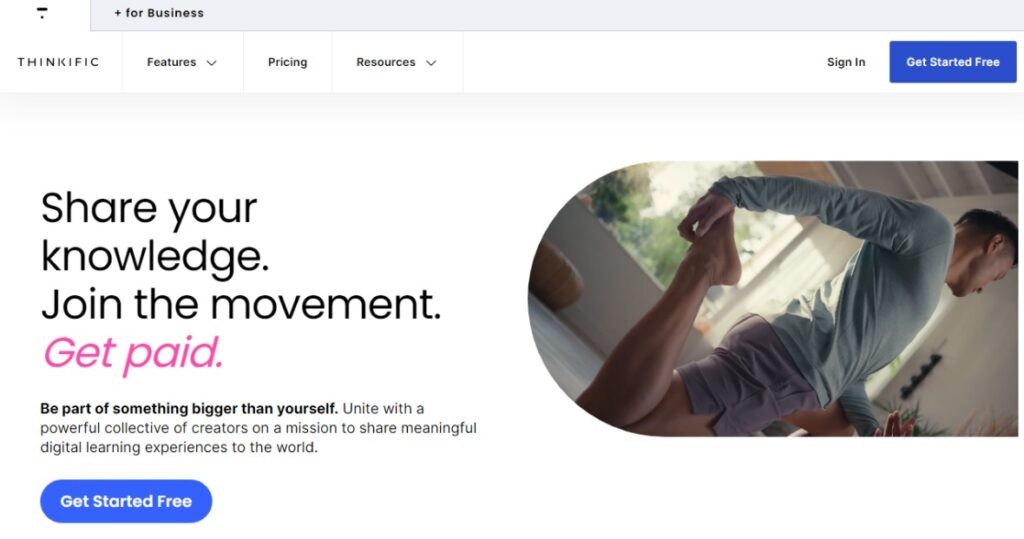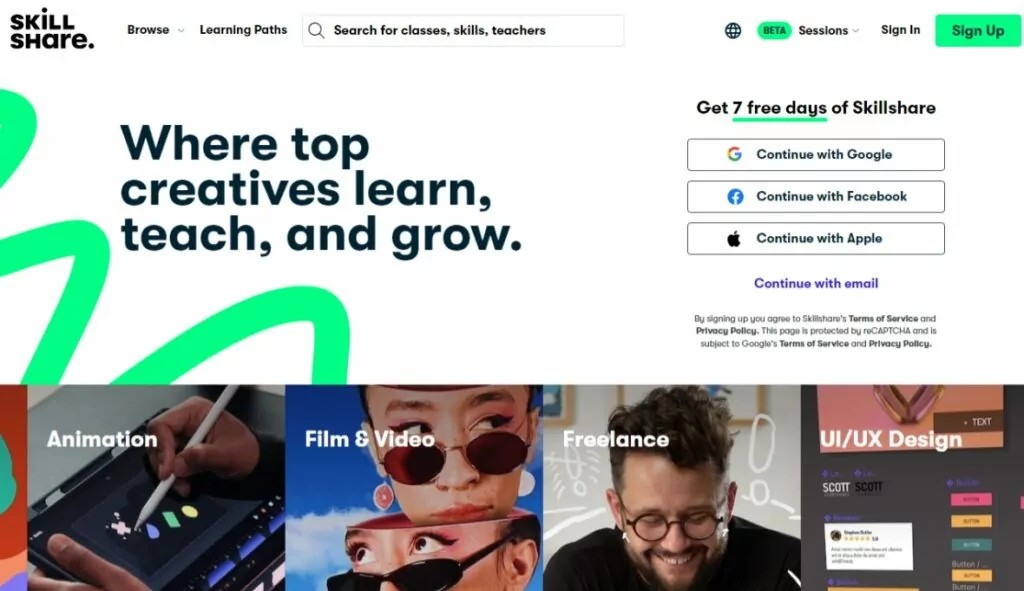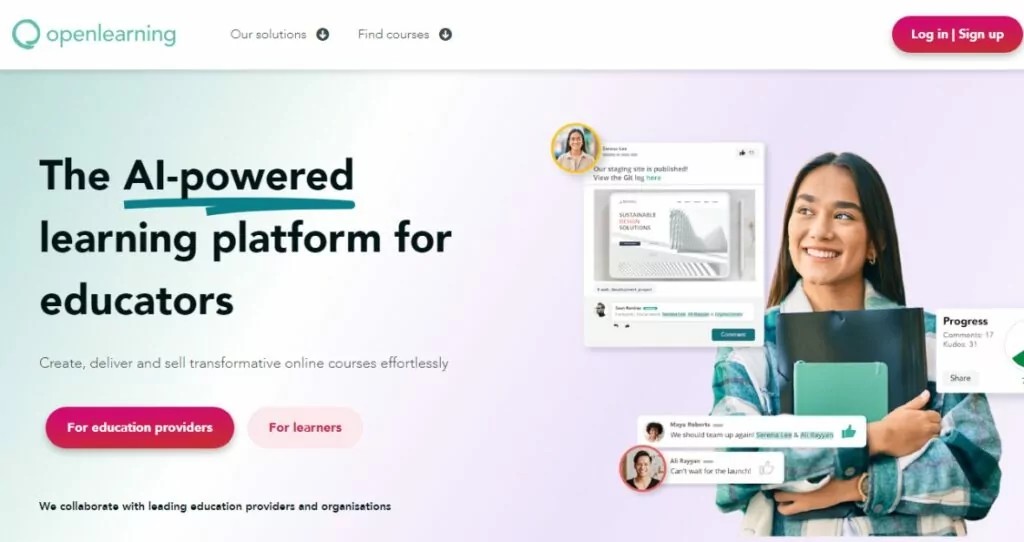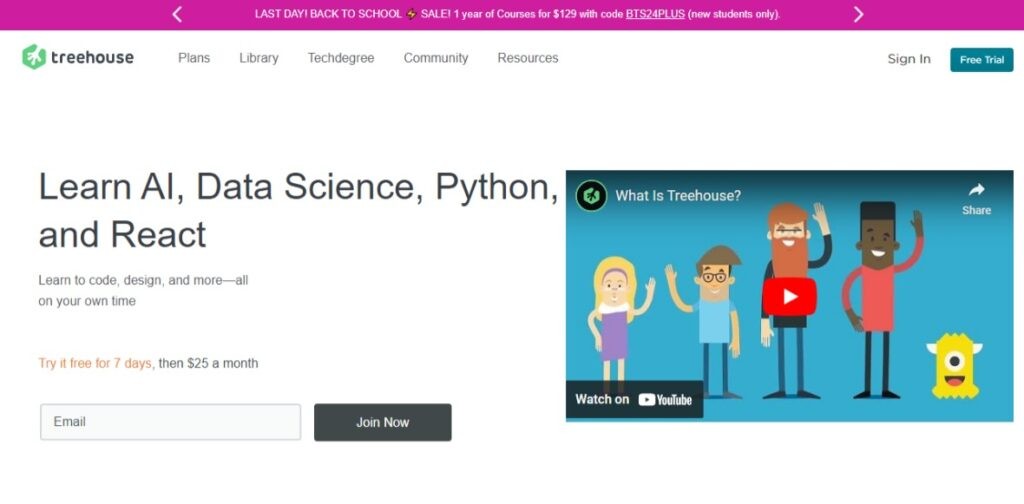Online learning platforms have revolutionized education, offering unprecedented access to knowledge and skills development. Whether you’re looking to enhance your professional capabilities, explore a new hobby, or even pursue formal education, the sheer volume of available learning platforms can be overwhelming. This guide will explore the top online learning platforms, helping you make an informed decision to meet your unique learning needs and goals.
Understanding the Value of Online Learning Platforms
Online learning platforms are more than just repositories of courses; they represent a fundamental shift in how education is accessed and delivered. Academic research highlights the transformative potential of these platforms in modernizing higher education. Key benefits include democratizing access to education by breaking down geographical barriers and offering more affordable learning options compared to traditional institutions. The modular structure of e-courses allows for focused learning, and the inherent flexibility of online platforms accommodates diverse learning styles and busy schedules. Furthermore, these platforms are crucial in keeping pace with the rapidly evolving demands of the modern world, offering up-to-date skills and knowledge, and providing robust mechanisms for assessing learning outcomes.
Key Considerations When Choosing a Learning Platform
Selecting the ideal online learning platform is a personal journey, contingent on your individual requirements, learning preferences, and objectives. Whether you are a student aiming to learn or an educator seeking to monetize your expertise, a balanced evaluation of several critical aspects is crucial.
-
Platform Structure and User Experience
The structure of a learning platform significantly influences the effectiveness of knowledge acquisition and the overall learning experience. A well-structured platform provides a logical and progressive learning pathway, essential for independent learners. While platforms like YouTube offer vast educational content, the lack of structured progression can hinder effective self-directed learning. A strong platform should offer clear course outlines, organized modules, and intuitive navigation to facilitate a seamless learning journey.
-
Course Content and Subject Matter Depth
The depth and breadth of course content are paramount. Each platform offers a unique approach to subject matter, and the ideal choice depends on your learning goals. For instance, in fields like web development or programming, the landscape of principles, languages, and frameworks is vast. Platforms specializing in these areas often offer focused specializations to cater to specific career paths or learning interests. For educators, understanding the existing course landscape on a platform is beneficial. Identifying platforms that already host courses in similar topics or formats (like mini-courses versus degree programs) can inform your content strategy and target audience.
-
Community and Collaborative Learning
The presence of a vibrant learning community can dramatically enhance the educational experience. Peer interaction offers diverse perspectives, reinforces learned concepts through discussion, and provides invaluable support when facing challenges. Learning alongside a cohort fosters motivation and engagement, transforming what can be a solitary endeavor into a collaborative journey. For instructors, cultivating learning communities within their courses can encourage brainstorming, independent problem-solving, and a deeper engagement with the subject matter.
-
Pricing Models and Value Proposition
Cost is a significant factor. While many platforms offer free courses, paid options often provide higher production quality, in-depth content, and dedicated support. Pricing models vary widely, from one-time course purchases to subscription services, free trials, and money-back guarantees. When evaluating pricing, consider the value offered in relation to your learning objectives. Does the course content justify the cost? Does the platform offer a pricing model that aligns with your budget and learning commitment? For educators, understanding platform fees, revenue sharing models, and subscription versus per-sale costs is crucial for monetization planning.
Online Learning Platforms vs. Learning Management Systems (LMS)
It’s essential to distinguish between online learning platforms and Learning Management Systems (LMS). While both operate in the digital education space, they serve different purposes. An online learning platform is typically user-facing, designed for students to access and engage with course content. In contrast, an LMS is primarily a back-end administrative tool for educators and institutions. LMS platforms provide functionalities to manage course content, track student progress, administer assessments, and facilitate communication. Think of an LMS as the infrastructure that supports the operations of an online learning platform. Online learning platforms are also distinct from simple online course websites. Platforms offer greater flexibility and a broader scope of learning experiences, ranging from short, focused modules to comprehensive degree programs, unlike course websites which are often limited to course creation and delivery.
Top 10 Online Learning Platforms: A Detailed Overview
Now, let’s delve into ten of the best online learning platforms currently available, each offering unique features and catering to diverse learning needs.
| Platform | Best For | G2 Score | Pricing |
|---|---|---|---|
| Thinkific | Custom Course Creation | 4.7/5 | Free plan available; Paid plans from $149/mo |
| Coursera | Accredited Certificates & Degrees | 4.5/5 | Free courses available; Paid courses from $9.99 |
| LinkedIn Learning | Professional Skill-Building | 4.4/5 | $39.99/mo or $239.88/yr |
| Skillshare | Creative Skills & Projects | 3.4/5 | $168/yr or $14/mo |
| edX | Formal Education | 4.5/5 | Free classes available; Certificates from $50 |
| OpenLearning | Microcredentials & Community | 4.6/5 | Free courses; Credentials $150-$500 |
| Udemy | Variety & Affordability | 4.5/5 | Courses from $10 to $200 |
| Treehouse | Coding & Web Development | 4.3/5 | $25/mo or $250/yr |
| MasterClass | Learning from Experts | 4.5/5 | $10/mo (billed annually) |
| Khan Academy | Free Foundational Education | 4.5/5 | Free |





-
Thinkific
Thinkific stands out as a highly adaptable platform, particularly suited for individuals and businesses aiming to create and sell their own custom courses and digital learning products. It’s not a marketplace with a vast library of pre-existing courses but rather a powerful toolkit to build your own learning ecosystem. Its intuitive interface and flexible system empower users to design bespoke learning experiences for various purposes, from student education to employee training and product onboarding. Thinkific’s strength lies in its customization capabilities, allowing creators to build branded learning environments without requiring coding expertise. The platform offers comprehensive support for course creators, including resources and guidance on course development, pricing strategies, and marketing techniques.
Best For: Custom course creation and digital products.
G2 Score: 4.7/5
Pricing: Thinkific offers a free plan, enabling users to start building courses immediately. Paid plans, starting at $149 per month, unlock advanced features for engagement, progress tracking, and monetization. For learners, course pricing is set individually by creators, with many free courses available across diverse topics.
“It was just so easy. I decided to stick with it, and I have never had any problems. If I’d known that platforms like Thinkific were available to me, I think I could have handled it better on my own from the beginning.” – Amanda Schonberg, Baking Business Success Story.
Pros Cons Learn to create courses for free. Flexible, intuitive system for custom course creation. Excellent customer support for course creators. No built-in course library for discovery. -
Coursera
Coursera distinguishes itself by partnering with prestigious universities and institutions globally, including Stanford and Yale, to deliver accredited certificates and degrees. It’s an ideal platform for learners seeking formal academic recognition and career advancement. Coursera offers a vast catalog of courses spanning diverse subjects, from arts and humanities to computer science and business. The platform is renowned for its high-quality content, rigorous academic approach, and the credibility of its credentials, which are widely recognized by employers worldwide.
Best For: Accredited certificates and degrees.
G2 Score: 4.5/5
Pricing: Coursera offers a range of pricing options. Many courses are available for free auditing. Paid courses start from $9.99, with certificate-level courses beginning at $39, and degree programs at $2,000+. Subscription options are available at $59 per month or $399 annually for access to a broad range of courses, excluding degree programs and MasterTrack certificates.
“Being a mother – especially a working mother means I’m constantly trying to juggle my schedule, my kids’ schedules, and work. I am very grateful for the flexible and remote learning programs that Coursera has to offer.” – Kenia R., Coursera Learner.
Pros Cons Extensive catalog of over 1,500 free courses. Wide variety of subjects, from arts to computer science. Official certificates recognized by many employers. Free courses do not include certificates. Some courses have time limits. -
LinkedIn Learning
LinkedIn Learning is strategically positioned as a platform for professional skill development, directly integrated with the LinkedIn professional network. It’s particularly valuable for professionals looking to enhance career-relevant skills and showcase their expertise. With thousands of courses focusing on business, technology, and creative fields, LinkedIn Learning enables users to seamlessly add completed certifications to their LinkedIn profiles, boosting their professional visibility and credibility. The platform is designed to support career progression and organizational learning initiatives.
Best For: Professional skill-building.
G2 Score: 4.4/5
Pricing: Individual courses are priced between $20 and $50. Subscription options include a monthly plan at $39.99 and an annual plan at $239.88, offering significant savings and access to LinkedIn Premium features. Bulk pricing is available for organizations and educational institutions.
“Step by step, we’re leveraging LinkedIn Learning to exchange knowledge and create a more open learning culture,” said Stefanie. “We’re changing the learning mindset to teach our coworkers how they can use LinkedIn Learning to build up their skills and grow their careers.” – Stefanie Reich, CDW.
Pros Cons Over 17,000 courses available. Detailed tutorials for popular software applications. Easy certification integration with LinkedIn profiles. Requires a LinkedIn profile for access. -
Skillshare
Skillshare distinguishes itself as a platform focused on creative skills, offering a flexible and accessible learning environment for artists, designers, and creative professionals. The majority of courses are project-based and taught by industry practitioners, emphasizing practical application and skill development in creative domains. Skillshare’s community-driven approach and emphasis on hands-on projects make it a popular choice for those pursuing creative hobbies or careers.
Best For: Creative skills and projects.
G2 Score: 3.4/5
Pricing: Skillshare’s pricing varies by region, but generally, an annual subscription is around $168, or $14 per month.
“I absolutely love Skillshare! There are a huge range of subjects to choose from with different levels usually available. The rating system is terrific for picking teachers. I’ve also never had a bad teacher—of the classes I’ve taken, the teachers have all been wonderful. Can’t recommend Skillshare enough!” – Elizapainter, Skillshare User.
Pros Cons More than 35,000 courses. Mobile app for learning on-the-go. Learning from “real” people and creative professionals. Courses may lack in-depth academic rigor. Instructors may not have formal teaching qualifications. -
edX
edX, founded by Harvard and MIT, is a non-profit platform dedicated to providing access to high-quality education from top universities worldwide. It’s geared towards learners seeking formal education and in-depth knowledge, offering courses, professional certificates, and degree programs, primarily in STEM fields but also expanding into other disciplines. edX is recognized for its academic rigor, association with prestigious institutions, and commitment to making education accessible globally.
Best For: Formal education.
G2 Score: 4.5/5
Pricing: While edX offers many courses for free auditing, certificates are available for a fee, ranging from $50 to $300 per course. Full degree programs are also available, with costs starting from $1,000+.
“edX has a wide range of courses that are easy to follow and genuinely useful. I just finished a course in Project Management, and it’s already making a difference at work.” – Louise, edX Learner.
Pros Cons Extensive library of high-quality courses. Opportunities to earn bachelor’s and master’s degrees. Strong representation of science and technology courses. Partnerships with globally ranked universities. More affordable degree options compared to on-campus programs. Fewer course options in creative fields. -
OpenLearning
OpenLearning is a platform that emphasizes community and collaborative learning, particularly popular in the Asia-Pacific region. It focuses on creating interactive and engaging learning experiences, incorporating social learning features and project-based assessments. OpenLearning is notable for offering microcredentials that can contribute towards university degrees, and for its integration of AI to personalize the learning journey.
Best For: Microcredentials and community learning.
G2 Score: 4.6/5
Pricing: OpenLearning provides free courses, with microcredential courses priced between $150 and $500. Course creation plans for educators start at $900 per year.
“The taster team at CSU has had unbelievable support from the OpenLearning team. Whether it involved suggesting ways to improve our search results, creating a results-oriented marketing campaign, developing creative and clean online modules, responding to any technical requests, or providing input and feedback into a myriad of questions, OpenLearning has been there for us.” – Professor Valerie Peachey, Charles Sturt University.
Pros Cons Microcredentials can be applied towards university degrees. Supportive learning community. Platform leverages AI technology. Courses can be relatively expensive. -
Udemy
Udemy boasts the largest course selection among online learning platforms, offering an extensive range of topics from personal development to professional skills. Its open marketplace model allows virtually anyone to create and sell courses, resulting in a vast and diverse catalog. Udemy is known for its affordability and pay-per-course model, providing learners with flexibility and control over their learning investments. However, the open nature of the platform also means course quality can vary.
Best For: Variety and affordability.
G2 Score: 4.5/5
Pricing: Courses on Udemy are individually priced, ranging from $10 to $200. Udemy occasionally offers subscription plans, but they may not be available to all users and may provide access to a limited subset of the full course catalog.
“The beauty of Udemy is that anyone, anywhere with an internet connection can learn from the world’s experts. Most courses are taught on demand, meaning you can take them at your own pace, and every course includes a discussion board where you can interact with the instructor and your fellow students. The best part is that most courses are free(!) and even the paid courses cost far less than what you’d pay at a local college or university.” – Udemy Reviews, edshelf.
Pros Cons Largest selection of courses available. 30-day money-back guarantee. No subscription required, pay per course. No deadlines, learn at your own pace. Course quality can be inconsistent due to the open marketplace. No academic credits awarded for higher education. -
Treehouse
Treehouse is a specialized platform focused on coding and web development skills. It offers structured learning paths called “Tracks,” guiding learners through progressive courses in areas like front-end development, cybersecurity, and app development. Treehouse is known for its interactive learning approach, incorporating videos, quizzes, and coding challenges, and for providing a built-in code editor to facilitate hands-on practice.
Best For: Coding and web development.
G2 Score: 4.3/5
Pricing: Treehouse memberships start at $25 per month for regular access or $250 per year. Techdegree programs, offering more structured learning and certifications, start at $49 per month.
“Treehouse has such a variety of learning, and the easy-to-follow videos, challenges, and practices are fantastic. The community is amazing, especially in the Techdegrees.” – Claire Tregunna, Treehouse Learner.
Pros Cons High-quality, progressive courses. Integrated text editor for coding practice. Limited course offerings outside of programming and technology. -
MasterClass
MasterClass offers a unique value proposition: learning directly from world-renowned experts and celebrities in various fields. The platform features high-production-quality video lessons and insightful content from masters in fields like culinary arts, film directing, writing, and business. MasterClass is ideal for learners seeking inspiration, unique perspectives, and high-level insights from industry leaders, although courses are generally introductory and may not provide in-depth skill development in specialized areas.
Best For: Learning from experts.
G2 Score: 4.5/5
Pricing: MasterClass subscriptions are billed annually, starting at $10 per month for an individual plan, $20 for a Duo plan (access on 2 devices), and $23 for a Family plan (up to 6 devices).
“Masterclass is amazing! The instructors are top experts, and the lessons are both inspiring and practical. The platform is user-friendly, and the video lessons are so engaging. I really can’t fault Masterclass!” – Jasmine, MasterClass Learner.
Pros Cons Celebrity instructors and industry experts. High-quality video production and unique content. Introductory knowledge accessible to beginners. Limited ability to measure learning progression. Smaller content creators cannot publish courses. -
Khan Academy
Khan Academy is a non-profit platform providing free educational resources, primarily focused on K-12 subjects such as math, science, and economics. It offers a vast library of video lessons, practice exercises, and personalized learning dashboards. Khan Academy is a valuable resource for students, parents, and lifelong learners seeking foundational education and supplementary learning materials, particularly in core academic subjects.
Best For: Free foundational education.
G2 Score: 4.5/5
Pricing: Khan Academy is entirely free.
“Fantastic resource for all! I’m so very impressed with the extensive content available to everyone, for free, via Khan Academy. What a gift!” – Caroline Williams, Khan Academy User.
Pros Cons Free courses across a variety of topics. Gamified learning experience to enhance engagement. Primarily focused on K-12 education.
Monetizing Your Expertise on Learning Platforms
Online learning platforms not only offer a wealth of learning opportunities but also empower individuals to become educators and monetize their knowledge. As you develop expertise in a field, consider creating and selling your own courses. The steps to successful course creation include:
- Skill Reflection: Identify your areas of expertise and skills.
- Audience Demand: Research what topics are in demand and what learners are seeking.
- Course Structure: Plan a clear and logical structure for your course content.
- Pricing Strategy: Determine a competitive and value-based price for your course.
- Marketing and Promotion: Develop a strategy to market your course to your target audience.
- Feedback and Iteration: Gather student feedback to continually improve and update your course content.
Launch Your Learning or Teaching Journey with Online Platforms
The world of online learning platforms is dynamic and diverse, offering solutions for every learning aspiration and teaching ambition. Whether you aim to acquire new skills, pursue formal education, or share your expertise with a global audience, exploring these top platforms is a valuable first step. Platforms like Thinkific provide the tools to build your own learning environment, while others like Coursera and edX offer access to university-level education. Skillshare and MasterClass cater to creative and expert-led learning, while Udemy and Khan Academy provide vast and affordable learning resources. By understanding your needs and exploring these options, you can effectively navigate the digital education space and unlock your full learning potential.
Start building your own learning platform today with Thinkific and share your knowledge with the world. Sign up for free here!
This blog post was updated in August 2024 to ensure the information is current and relevant.